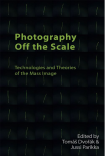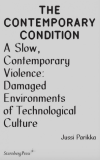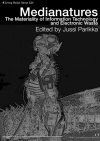On Media Meteorology
I wrote a short text for J.R. Carpenter’s just recently published book The Gathering Cloud (Uniformbooks), a book of which engages with the history of meteorology and various archival material about the weather and clouds in hendecasyllabic verse. The Gathering Cloud came out also as web-based work that you can find here but I warmly recommend the book itself too. Do also get in touch if you are interested in reviewing her book.

Below my short introductory-kind of a text, published with permission by the press.
On Media Meteorology
Every time it rains, media history soaks into our skin. Clouds and their seemingly light ephemeral nature are full of the chemical remnants of the on-going industrial age, what some call the Anthropocene . Human science and technology have penetrated the hard geological substrates of our culture and made the air part of our chemical cultural history. Many prefer too think of the current informational culture as one of light, marked by the weightlessness of fibre optics and the speed of digital transactions, and yet it is also one of weight – of minerals, metals, energy consumption, and entropy.
The weather comes and goes but our enthusiasm for it persists. To speak of weather is to articulate a continuum between humans and their environment. It’s what’s high above our heads and what sustains life beneath our feet that should concern us most. A breath of air. We inhale the weather. We exhale it. We measure it, we paint it, we verbalize it, we speak and write poetry about it.
J.R. Carpenter’s The Gathering Cloud is both a condensation of media history and a comment on the current environmental weight of clouds. This book reminds us that cloud computing is one of the backbones of contemporary culture. The particularly interesting thing about cloud computing is that it is so heavily about climate control: server farms are carefully managed environments that cater to the well-being of the machines that ignorantly and yet with high-speed accuracy convey the things we talk about online, from #lolcats to emails, from memes to alternative facts. Of course, clouds were technological long before cloud computing. As Carpenter writes, J.M.W. Turner’s painting “Rain, Steam and Speed” (1844) is about the meeting of a new technological world with the air of the planet: the exhaust of steam trains and of the massive factories that define the particular clouds of our climate change era mix with air to create vast fields of waste, both visible and invisible.
Clouds are painted, engraved, and increasingly now also computed in weather simulations and forecast models that both the holiday goers and the military are constantly keenly following. Clouds and the weather have been continuously remediated through a history of visual technologies and strategies of representation, and still, as Carpenter points out, they resist a stable ontology. They resist a lot of things: they are made of constant perturbations, micro-movements, dynamic turbulence. This struggle with representation is not just about showing what’s up there but also bringing it back down here as material for analysis: nowadays, clouds are simulated and again, and so return to digital cloud (computing) platforms.
Carpenter evokes the Greek history of the four elements (earth, air, fire and water) as part of media and visual history. As such, her project relates to recent work in both contemporary technological art and cultural theory interested in the environment. She draws upon John Durham Peters’ The Marvellous Clouds that starts investigations of media from their elemental existence as nature. As Peters argues, the sky has been for a long period considered as a place of media. Read as signs by Ancient Babylonians, as exhalations by Ancient Greek Philosophers, only in our age of technical media has the sky become the object of another sort of analysis. The sky is where visual media starts, as light filtered through the atmospheric levels. But light is not the only element of interest. The other chemical realities of clouds must also be included in this story.
The Gathering Cloud presents a series of material transformations that are made visible through a media history executed as digital collage and print publication, hendecasyllabic verse and critical essay. Carpenter’s methodology as a writer is closely linked to the field of media archaeology (a field interested in artistic, surprising, experimental, and sometimes imaginary ways of understanding contemporary media culture though the past). But it would be as fair to call her work a poetic media meteorology: it shows passionate ways of writing the sky, the digital cloud, and the climate changes that we live in, revealing gaps between our concepts and realities of the environment. And don’t be mistaken by airy the connotations of the word – the cloud is already well deep in our lungs as well as our minds.

A still from J. R. Carpenter’s The Gathering Cloud http://luckysoap.com/thegatheringcloud

















